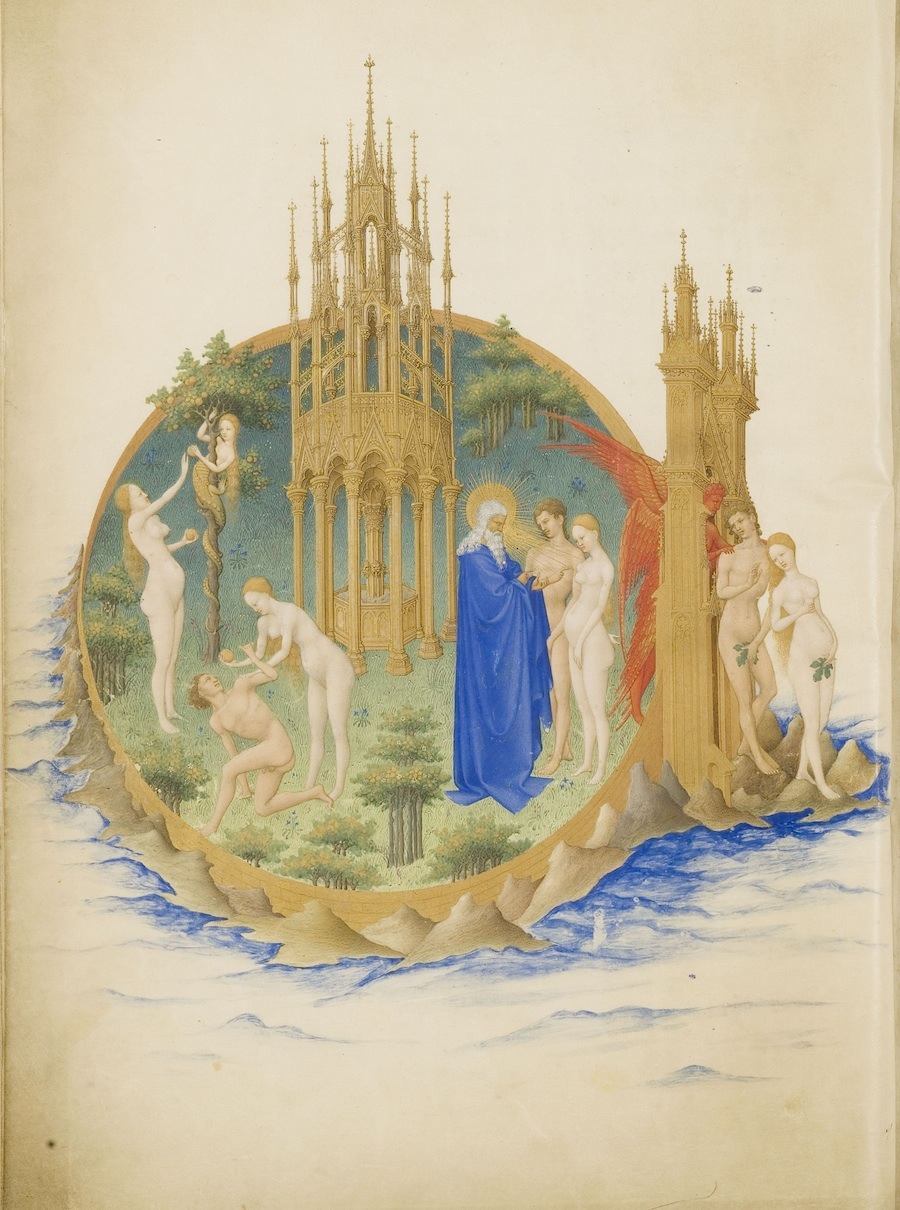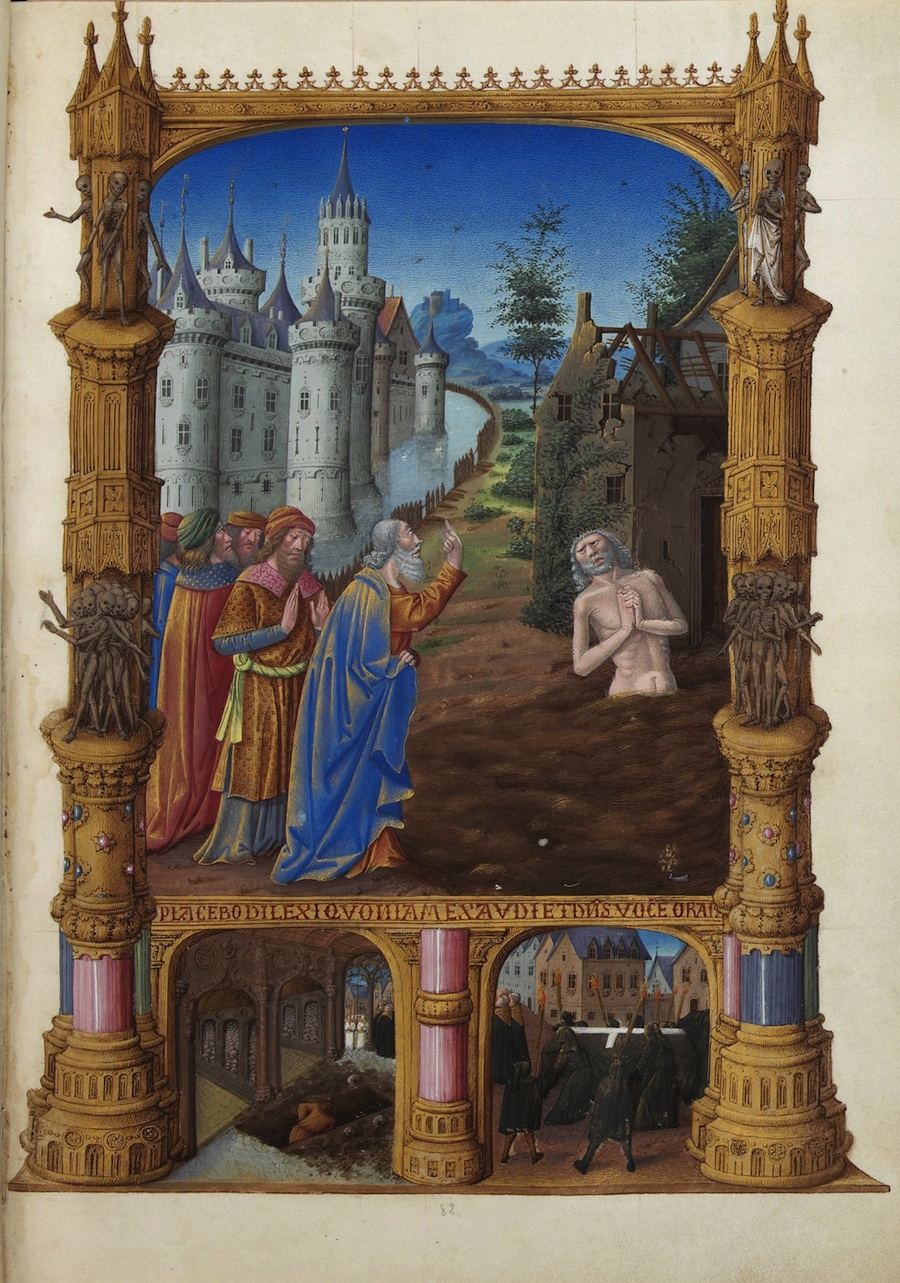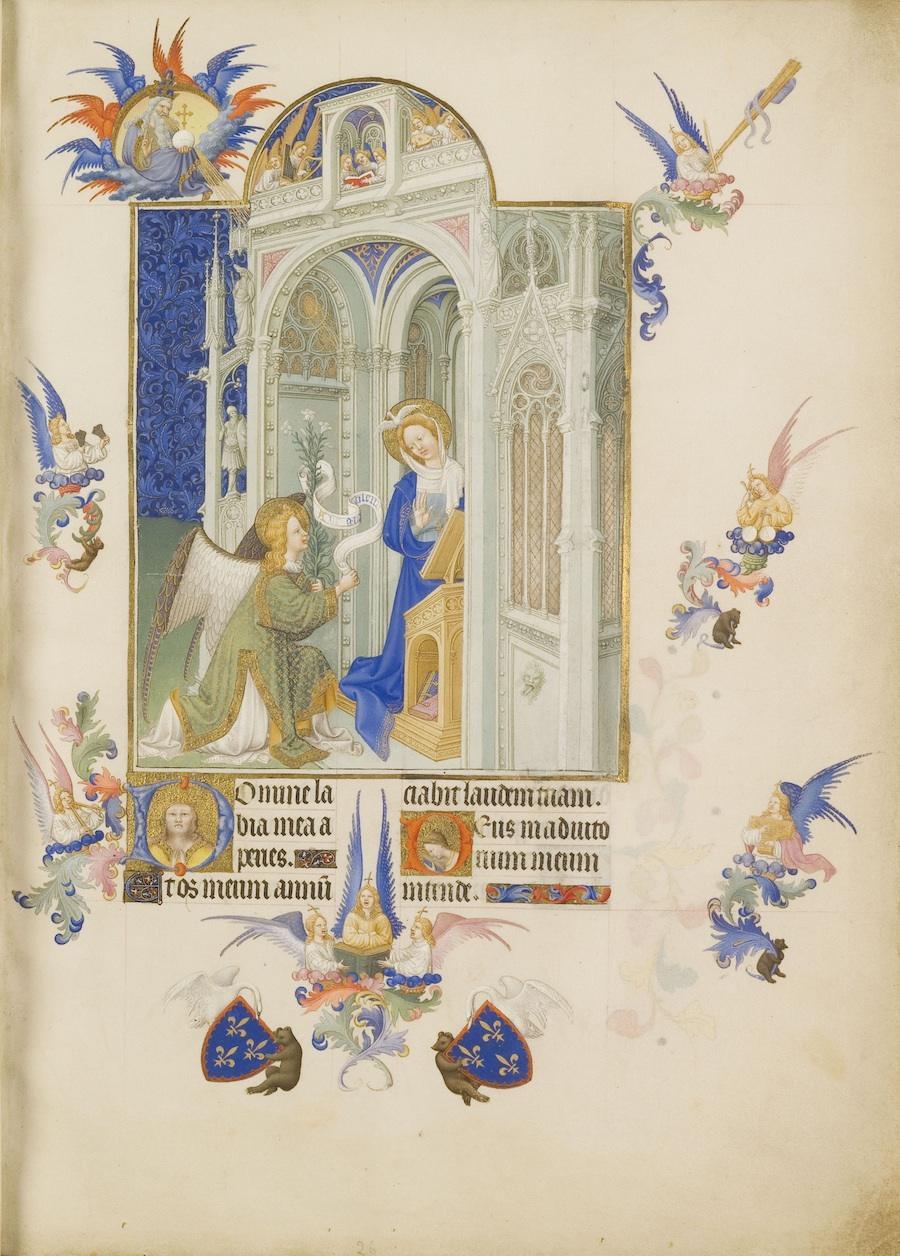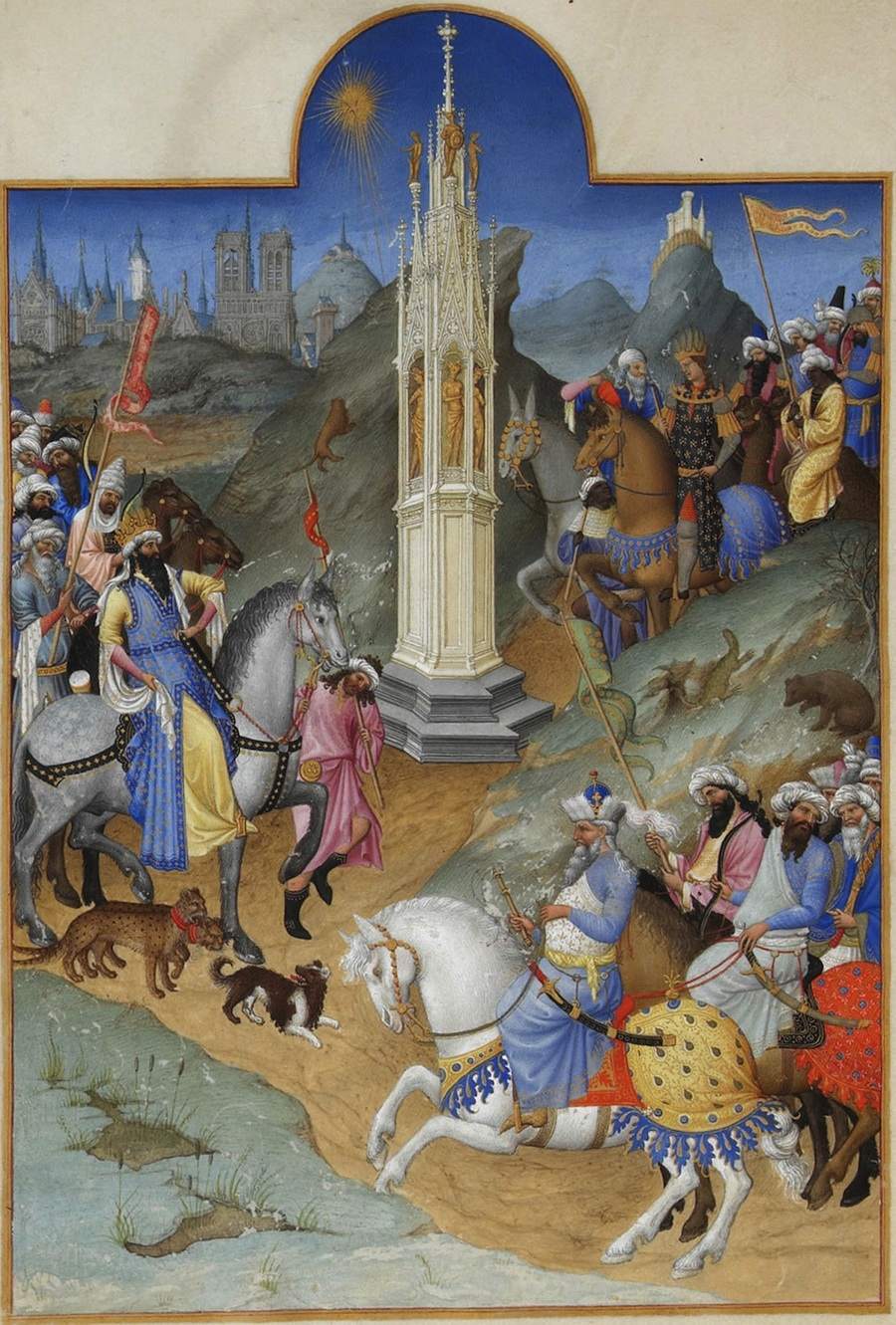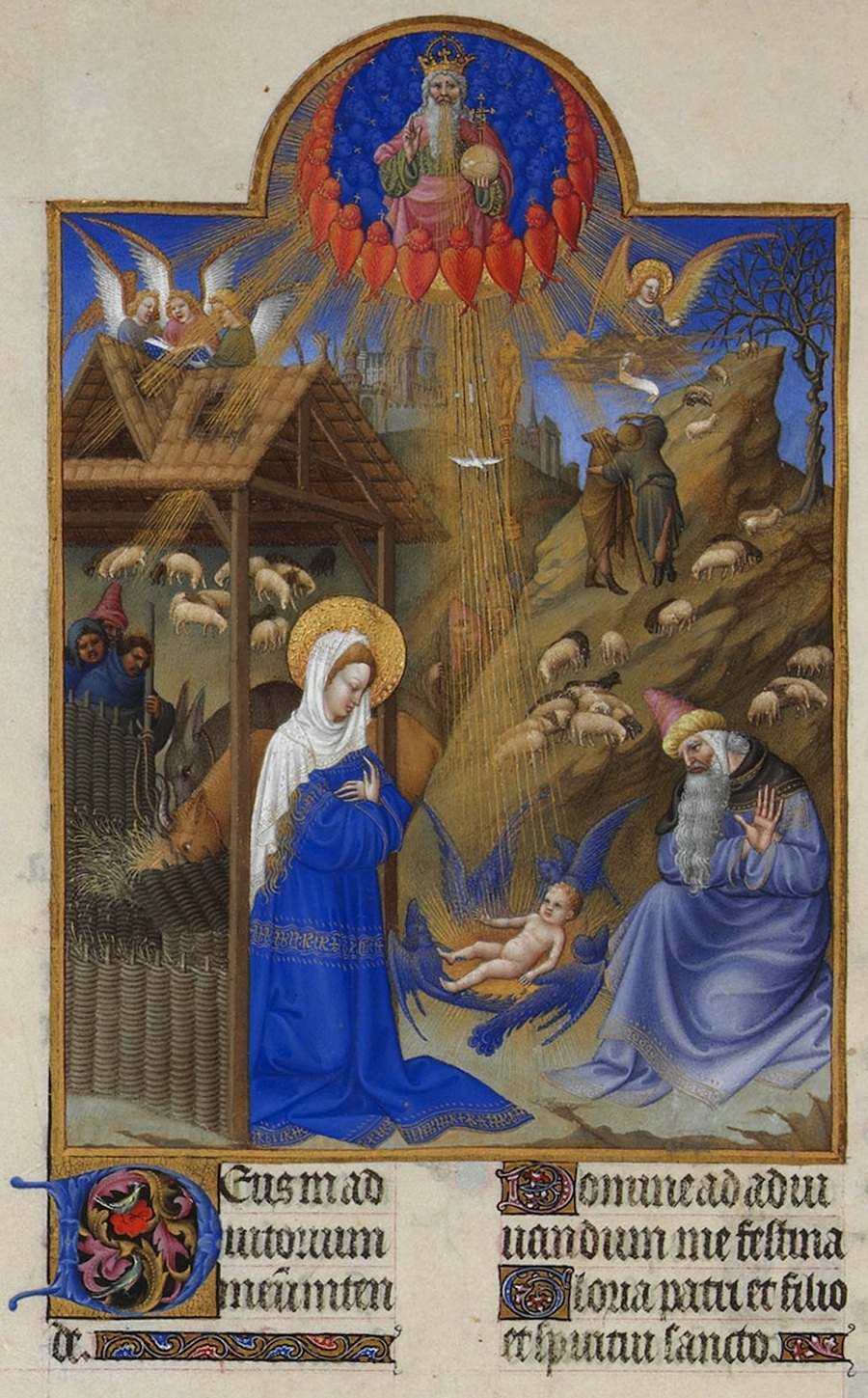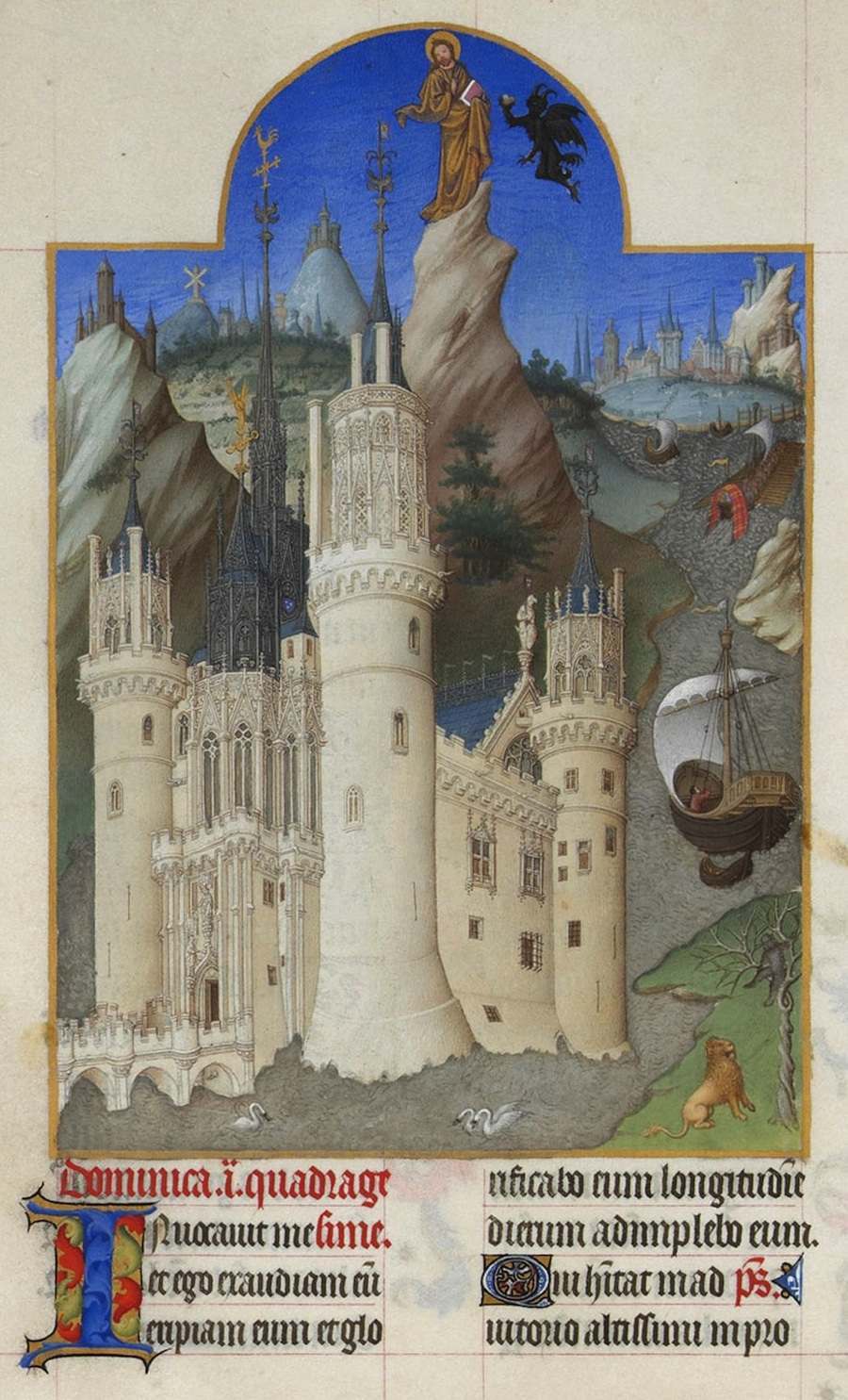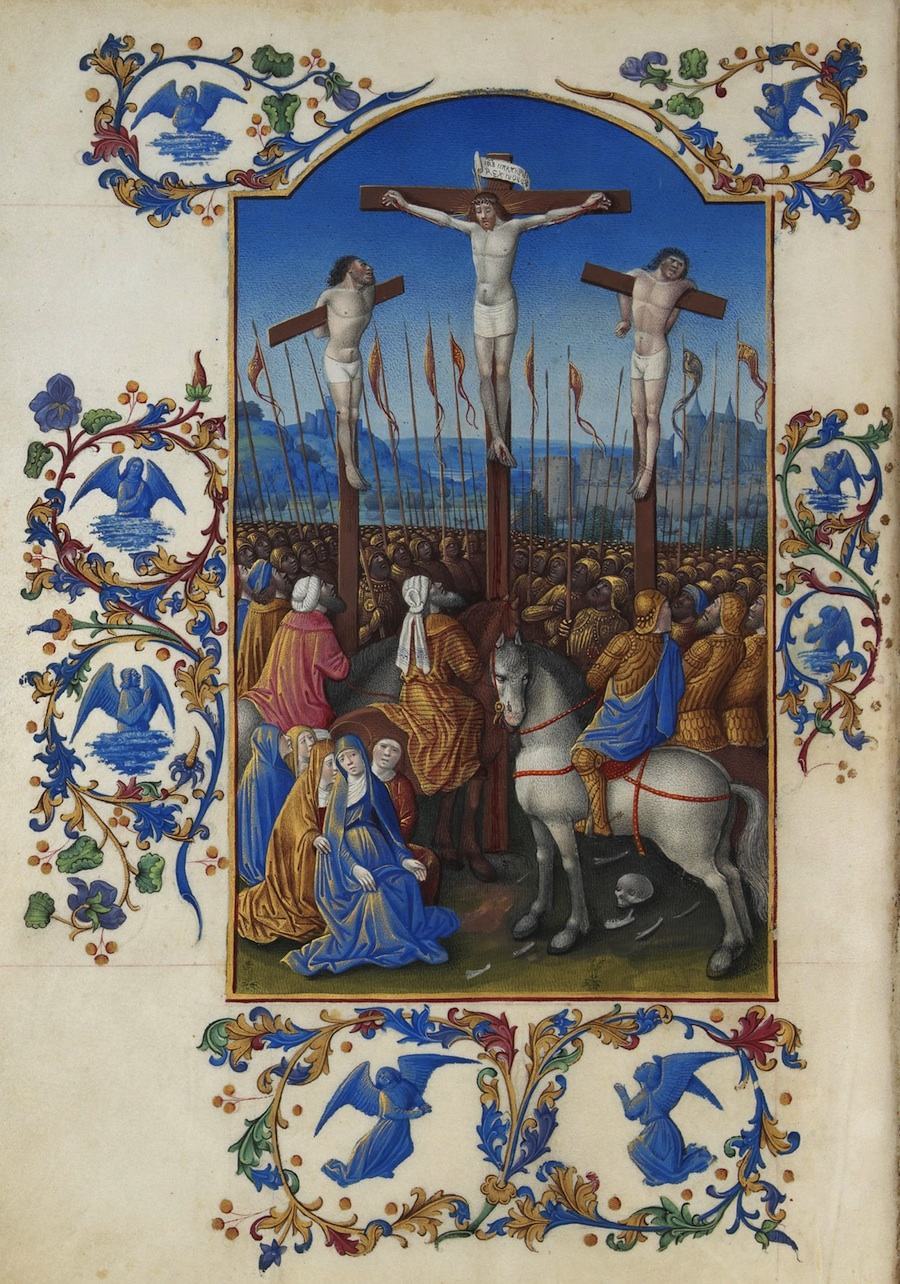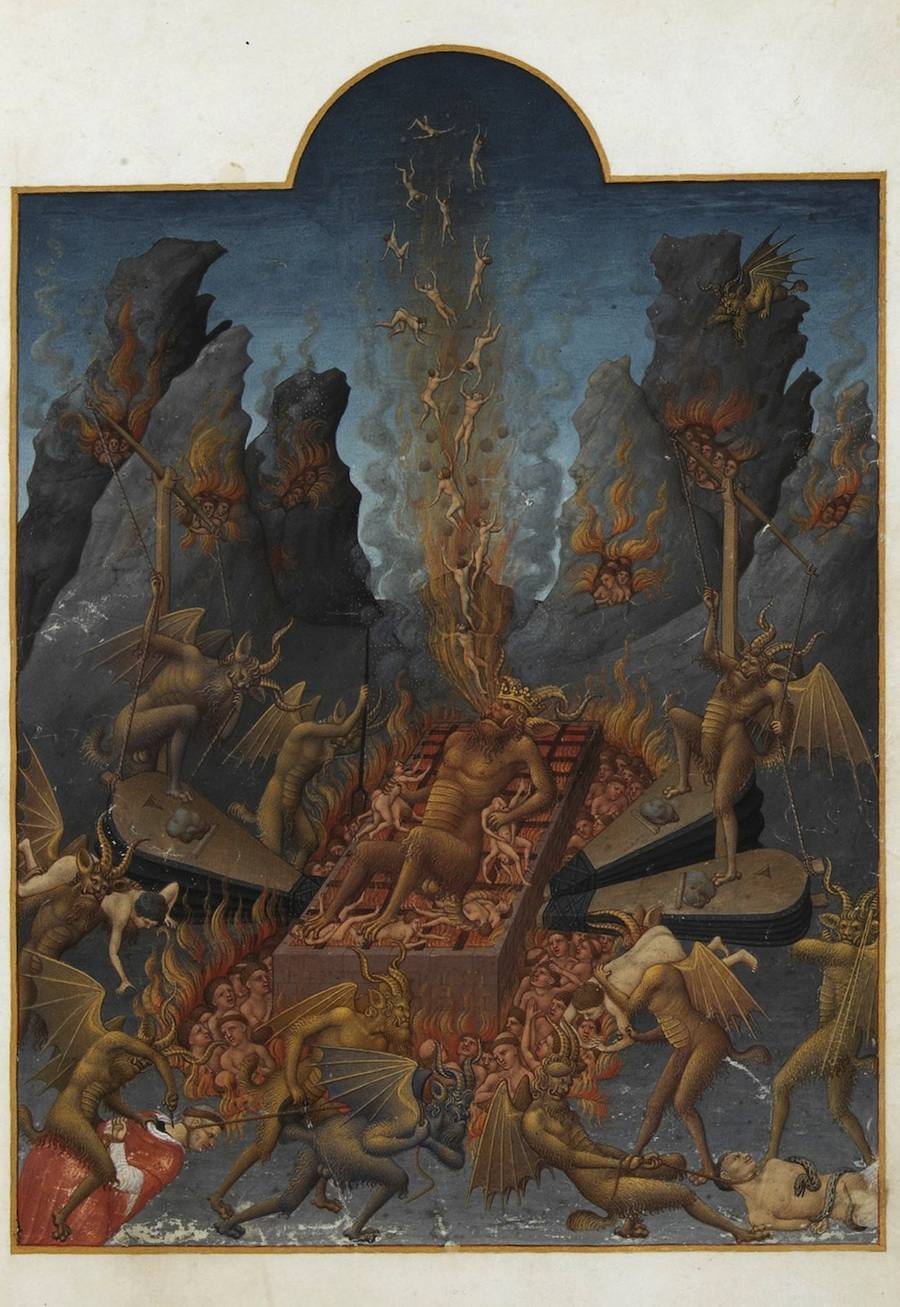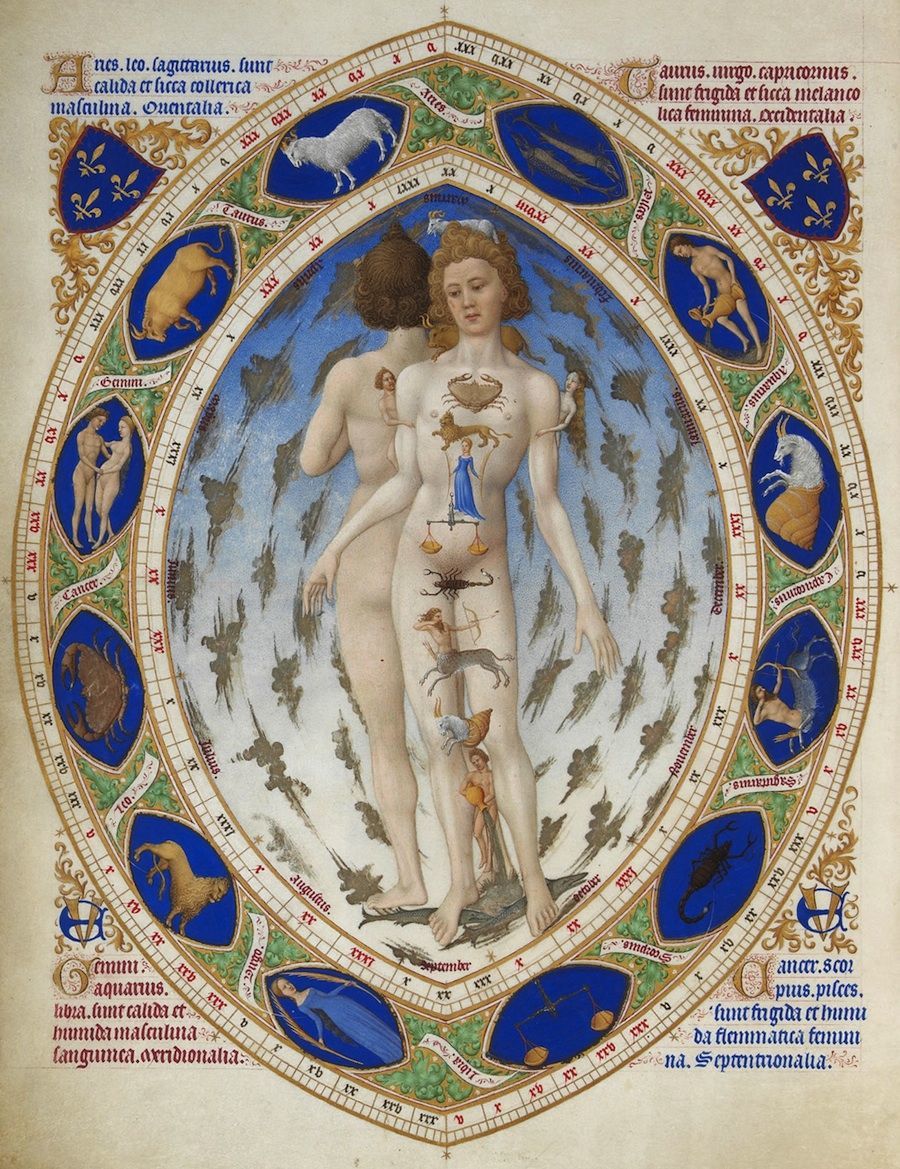A Book of Hours is a Christian devotional book popular in the Middle Ages–from the fifth to fifteenth centuries–which contained prayers, psalms, religious and canonical texts. These books were illuminated with decoration and often painstaking illustrations that could take months, and even years to complete.
The most famous Book of Hours is the Très Riches Heures du Duc de Berry, which was produced by Dutch brothers Herman, Paul Johan Limbourg for the Duke Jean de Berry between 1412- 1416.
John the Duke of Berry (1340–1416), aka John the Magnificent, was the son of King Charles V of France. He is now best remembered as a patron of the arts, employing the Limbourg brothers to illustrate a Book of Hours in 1405-1409. Delighted with their work, he again employed the brothers to produce an even greater book of hours–Très Riches Heures du Duc de Berry.
This book consists of 206 pages of fine quality parchment, 30 cm in height by 21.5 cm in width, with 66 large illustrations and 65 small.
It was passed down to different families after the Duke’s death (he died in debt, no doubt from his lavish expenditure on commissioning works of art), and was only recognised as work of great importance in the 1800s.
Très Riches Heures du Duc de Berry is described as “the king of illuminated manuscripts” (“le roi des manuscrits enluminés”). In particular the illustrations of events associated with each month of the year, which have hailed as the finest depictions of medieval life ever produced.
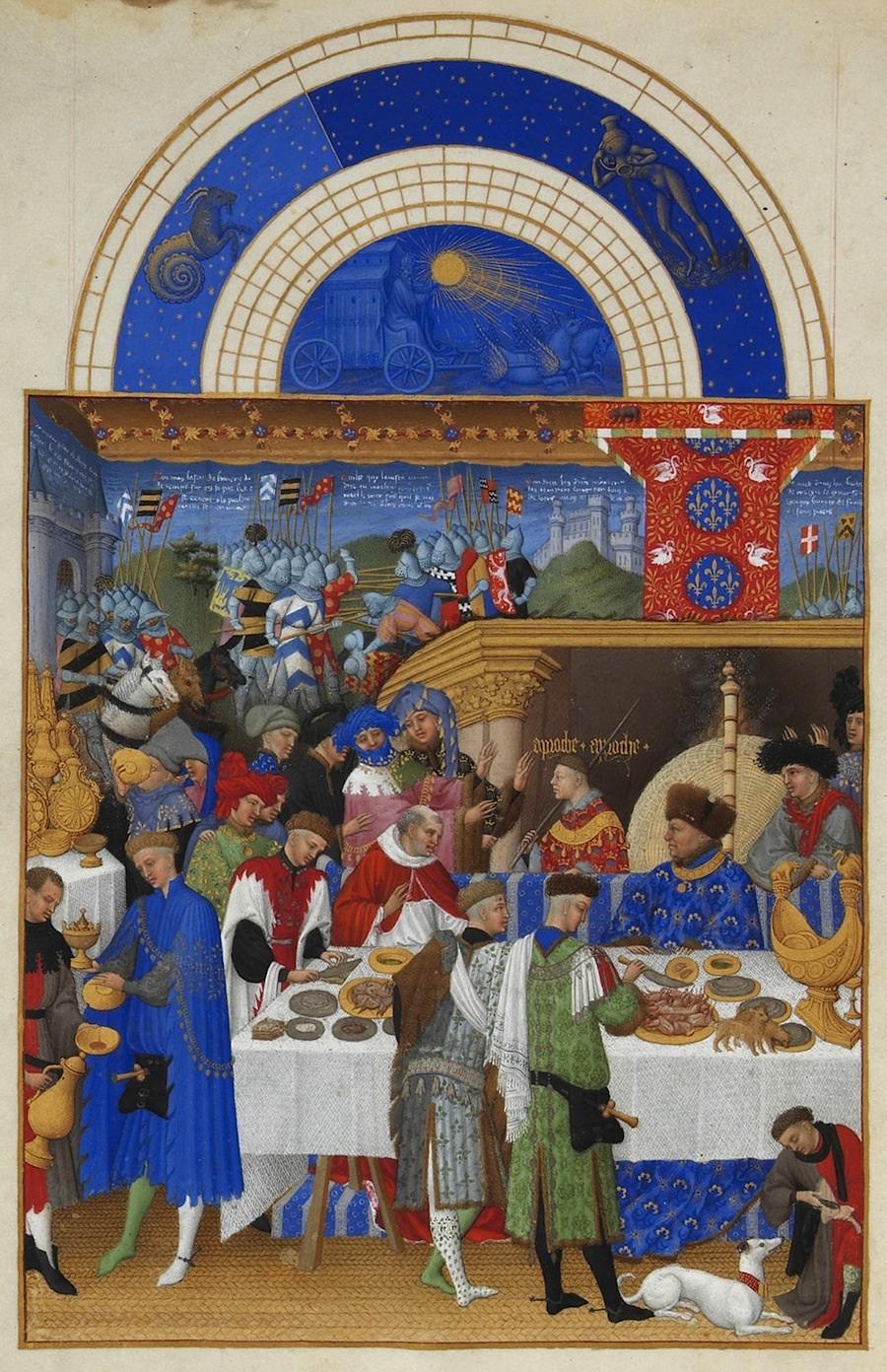
January: The Duc de Berry’s household celebrate the New Year with a feast and by exchanging gifts.
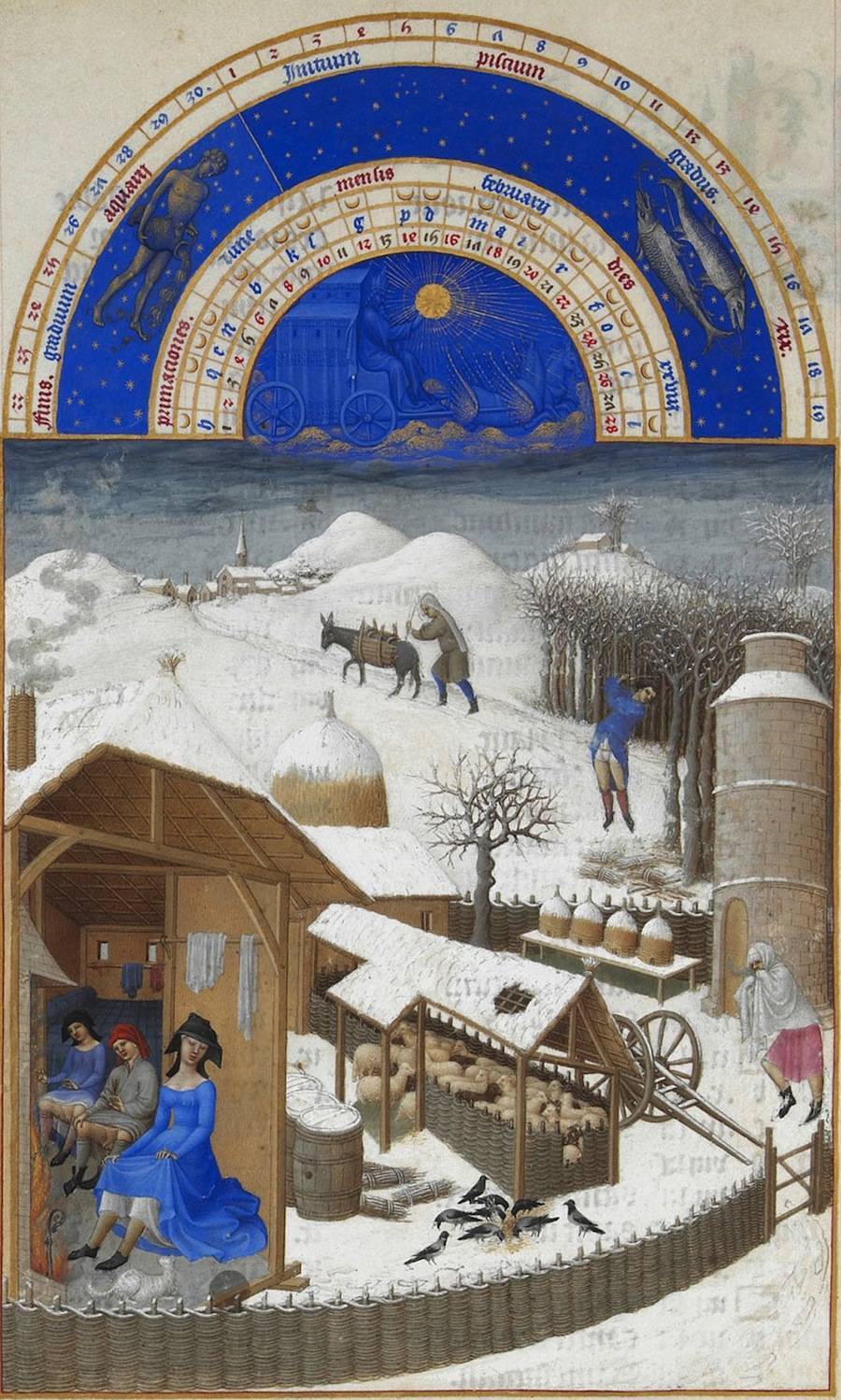
February: A winter’s day–a peasants family keep warm by the fire, while others chop wood or head off to market.
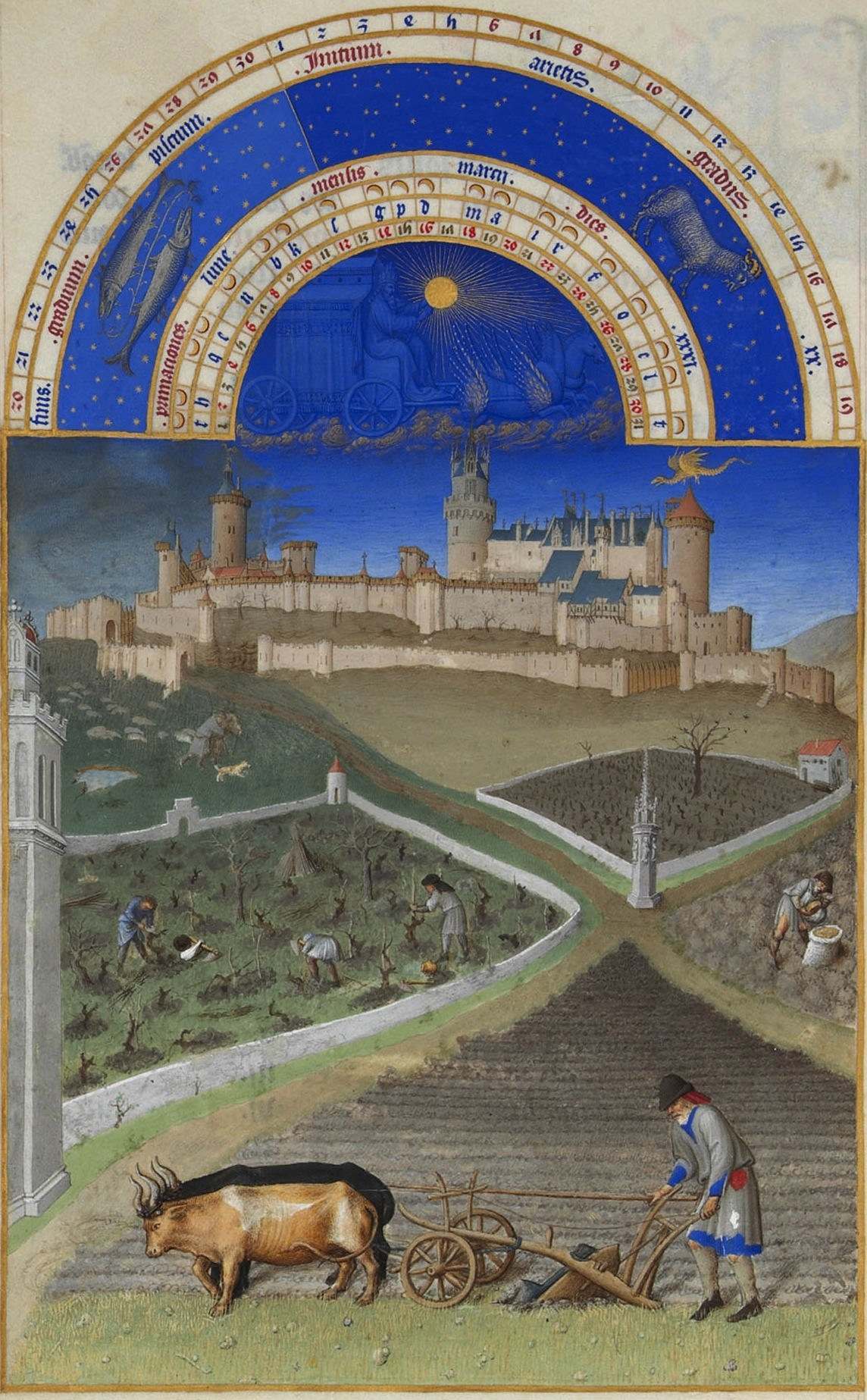
March: The sowing season begins–a peasant tills and seeds the soil. In the background the Château de Lusignan, one of the Duc de Berry’s residences.
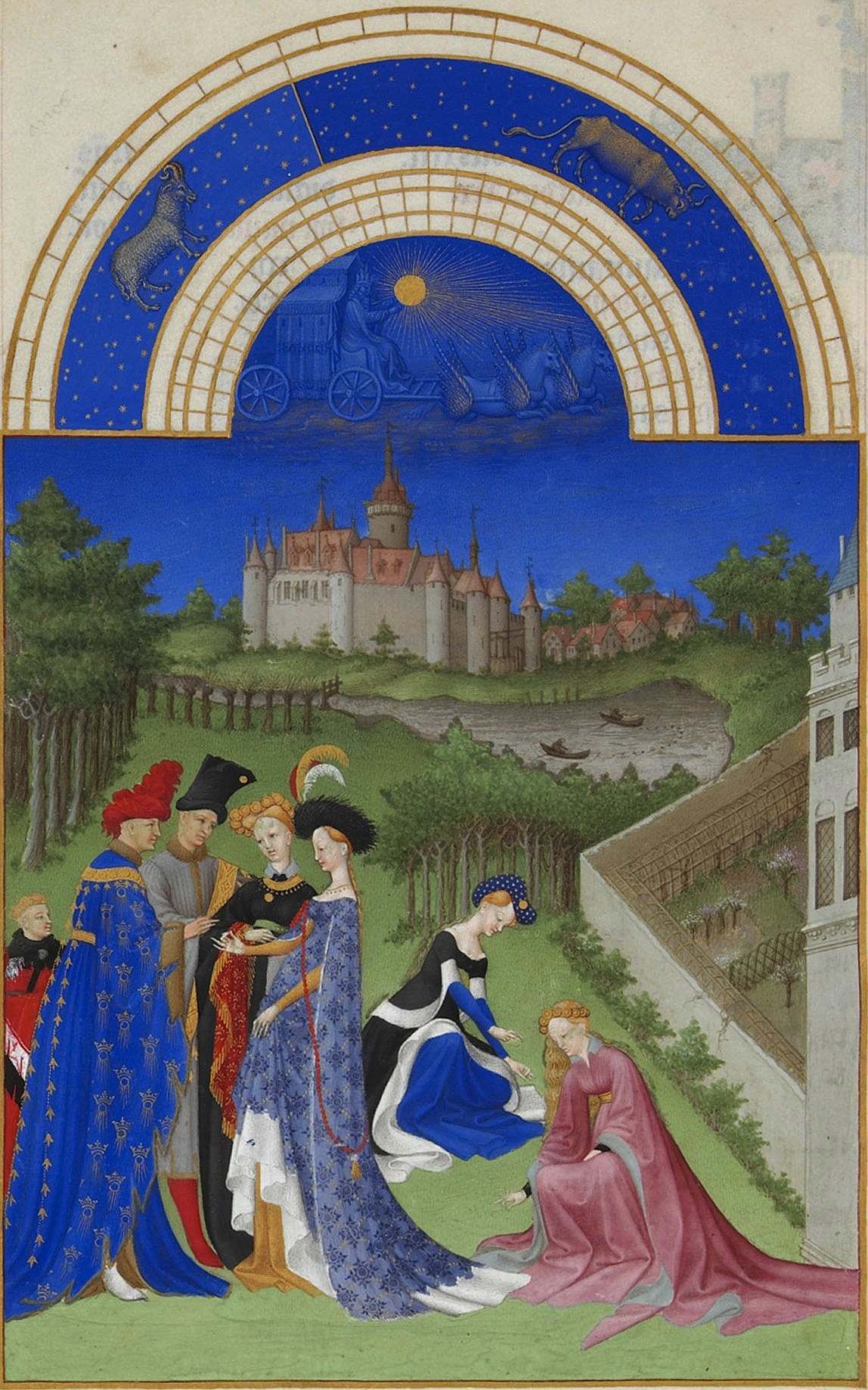
April: In front of the Château de Dourdan, a young couple are betrothed.

May: Nobles riding on the outskirts of Paris–in the background can be seen Tour de Nesle–a guard tower in the old city wall and the Duc’s Paris residence.
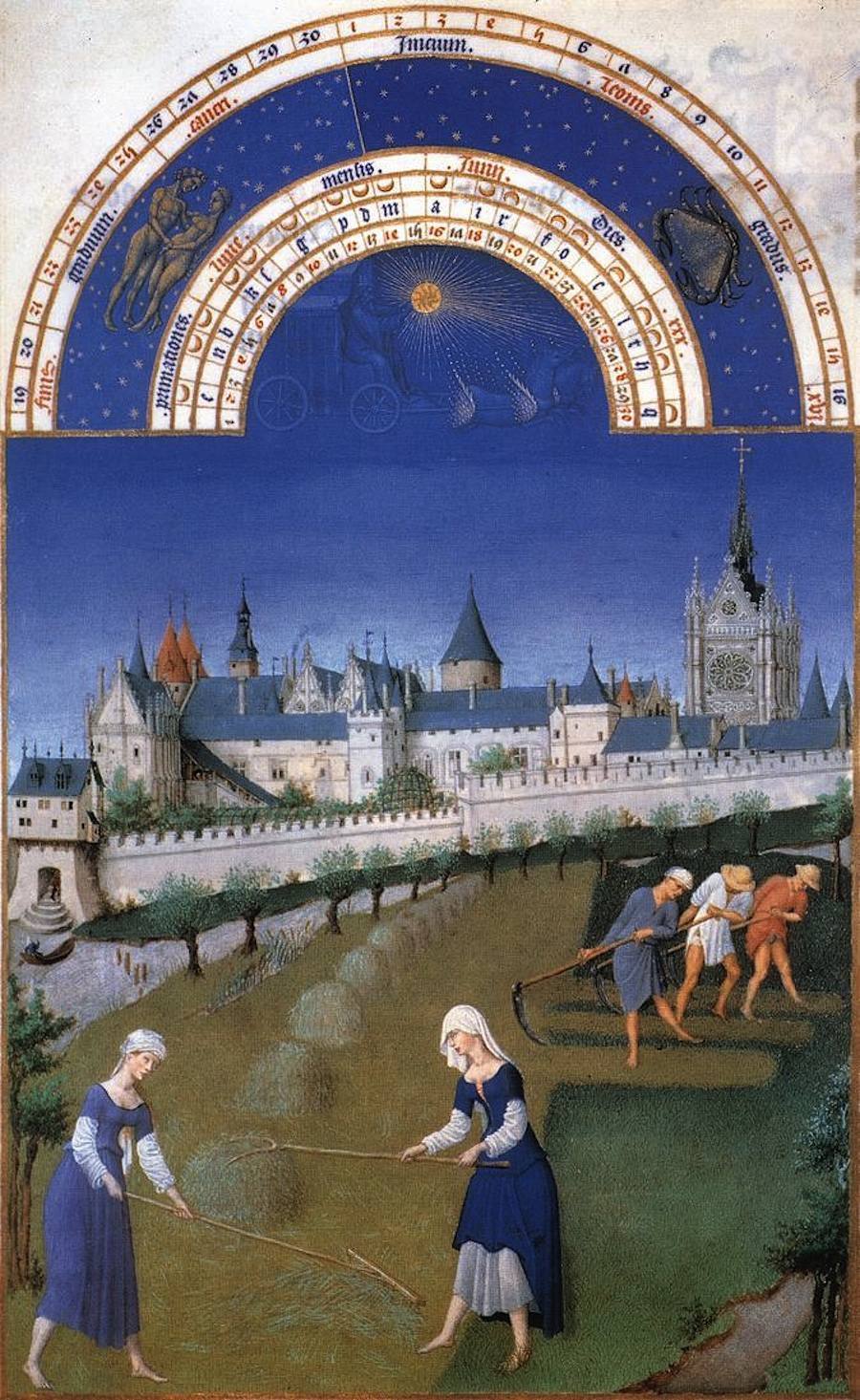
June: Harvesting near to the Palais de la Cité and the Sainte Chapelle.
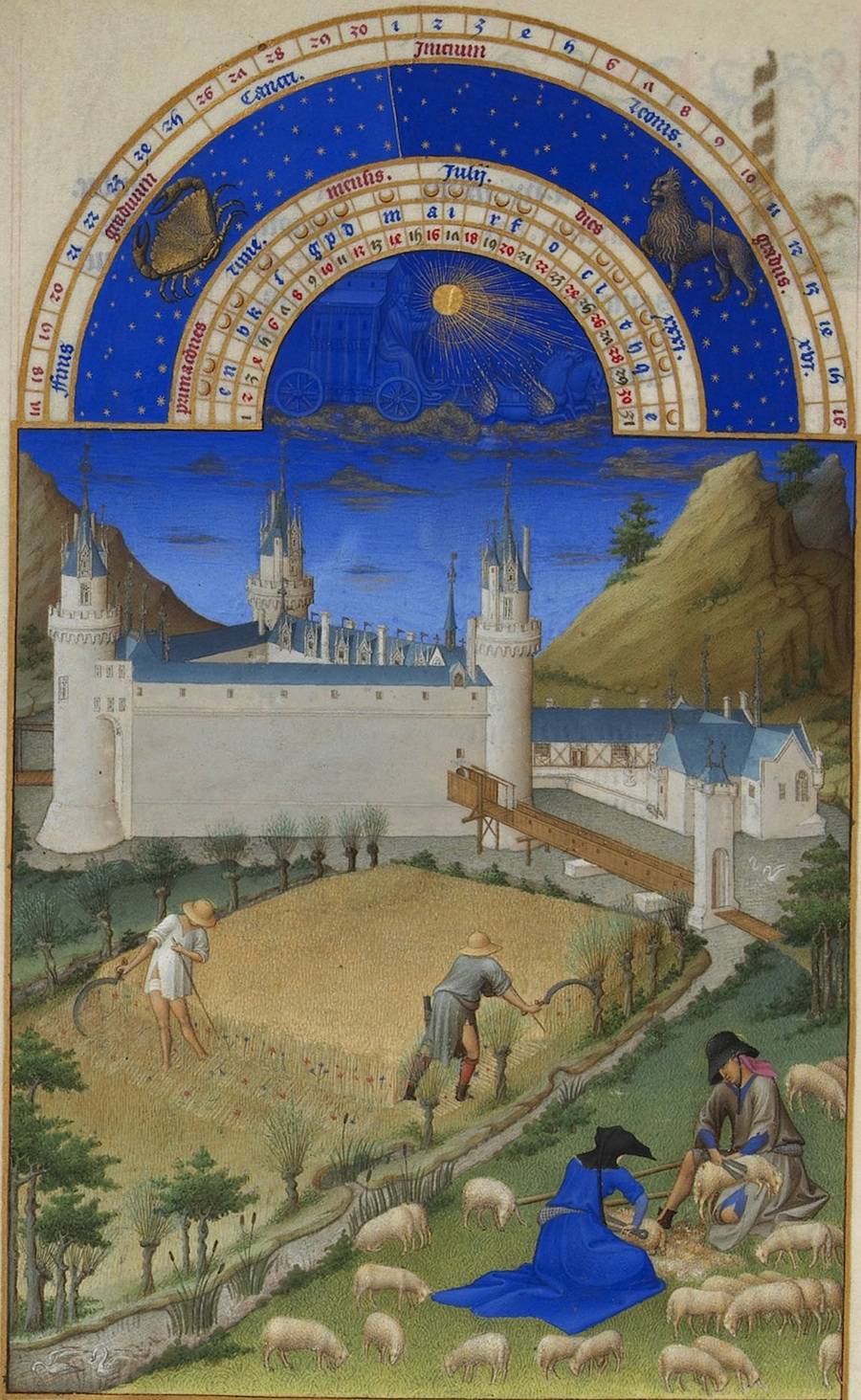
July: Harvesting and the sheep shearing at the Château
du Clain near Poitiers.
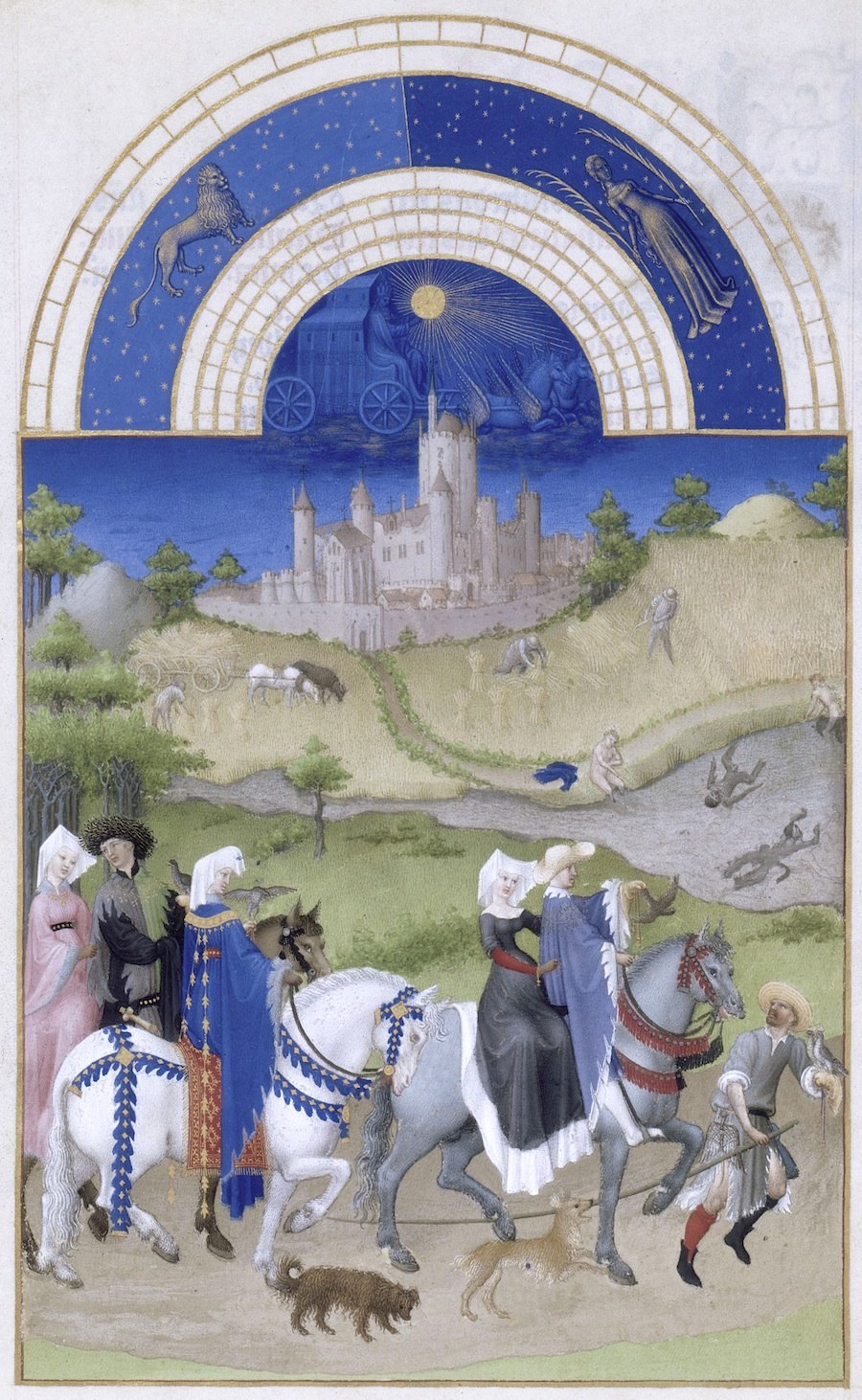
August: Nobles practice falconry on the grounds of Duc’s Château d’Étampes.
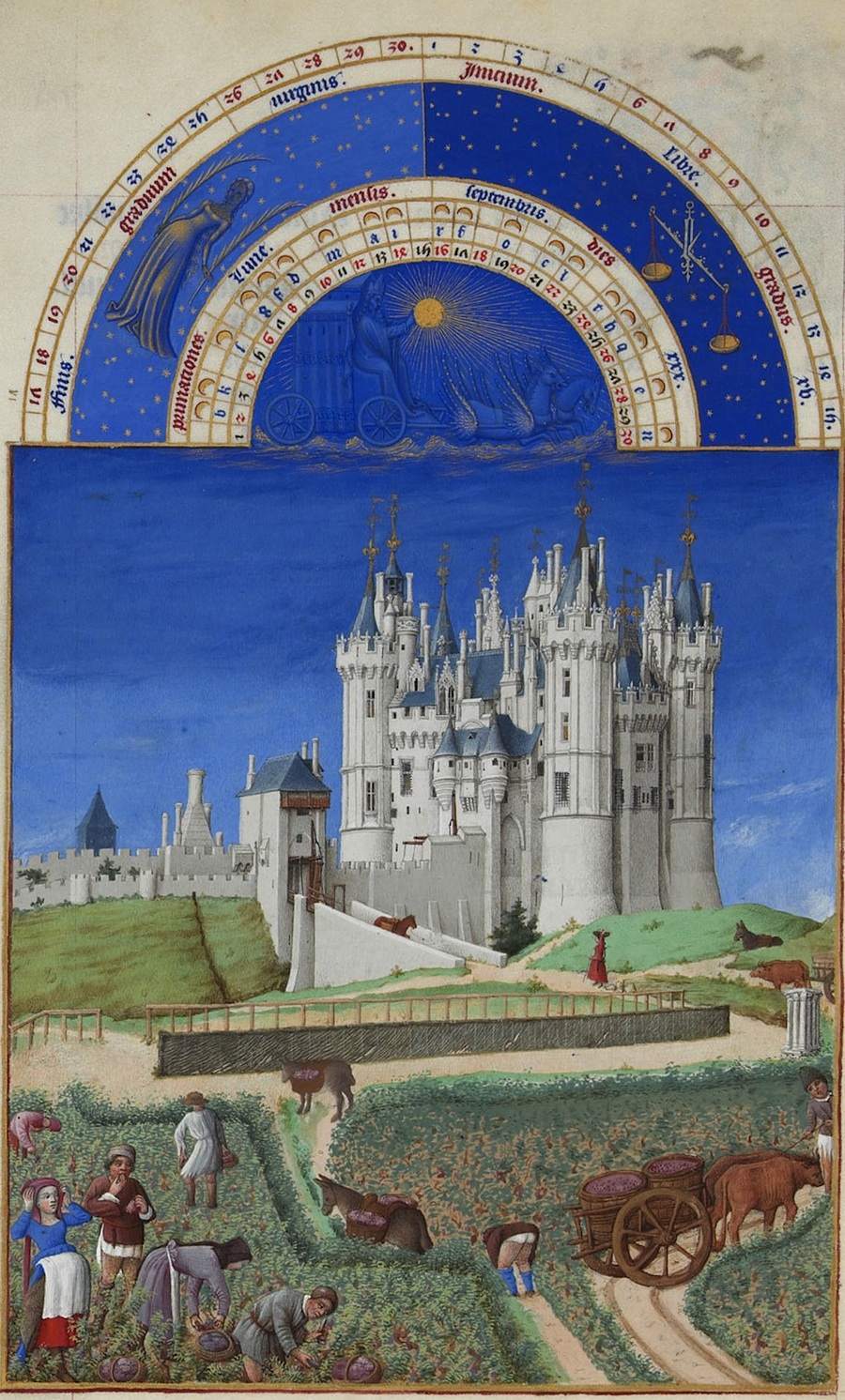
September: The harvesting of grapes at the Château de Saumur.
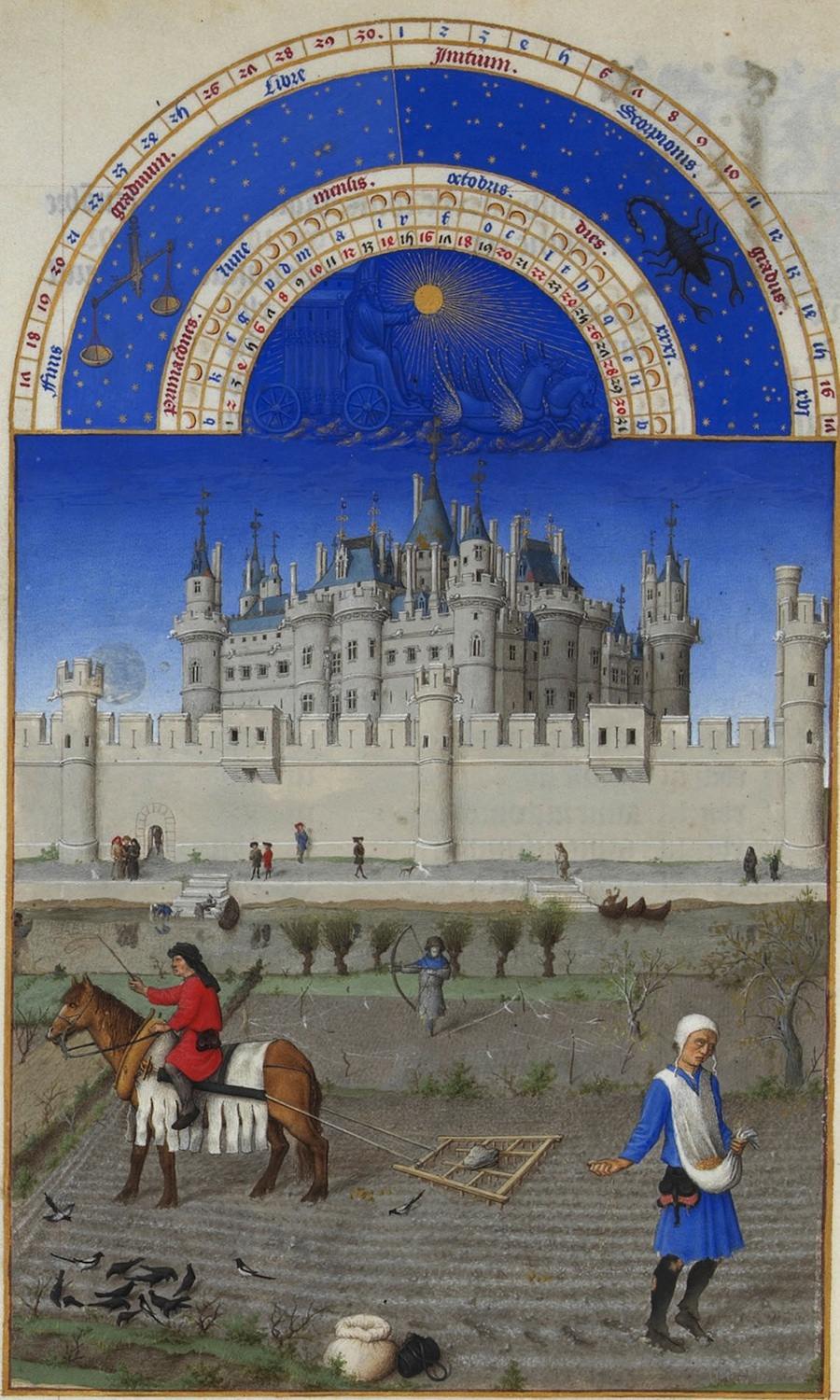
October: Tilling of land and sowing seed in front of the joli Louvre (‘pretty Louvre’)–originally a fortress it became a royal residence under Charles V. It is now an art gallery.

November: Harvesting acorns, some of which are fed to the herd of pigs.

December: A wild boar hunt, the dogs have taken down a giant hog, while the hunters gather round on the woods of the hunting lodge and fortress the Château de Vincennes.
Would you like to support Flashbak?
Please consider making a donation to our site. We don't want to rely on ads to bring you the best of visual culture. You can also support us by signing up to our Mailing List. And you can also follow us on Facebook, Instagram and Twitter. For great art and culture delivered to your door, visit our shop.




